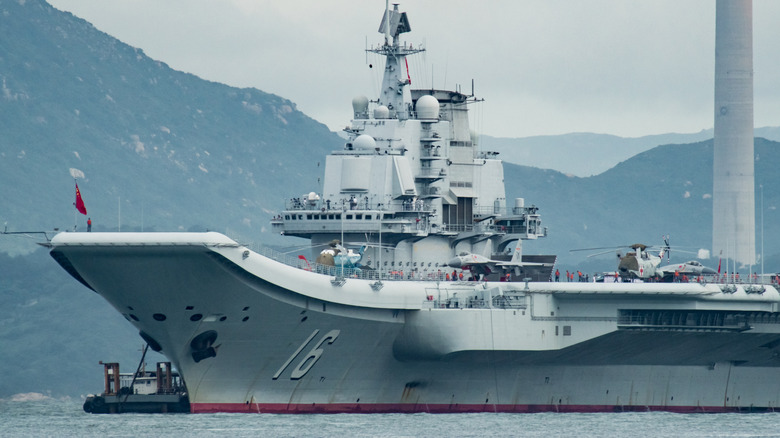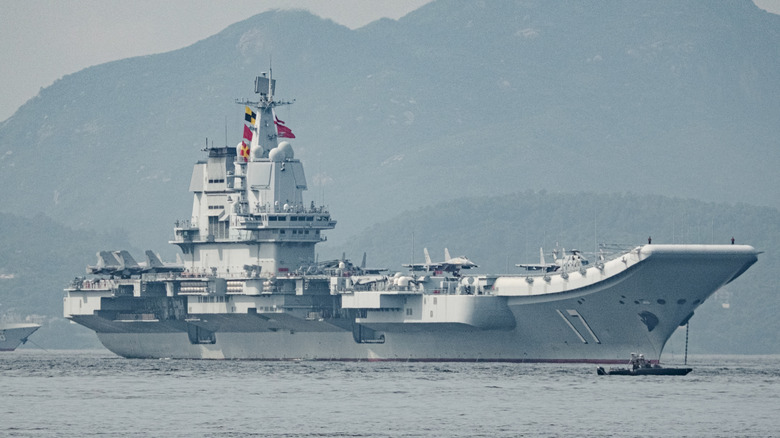How Many Fighter Jets Can Chinese Carriers Launch & How Does The US Navy Compare?
The growing strength of China's military forces is convincingly displayed by its expanding fleet of aircraft carriers. As of mid-2025, China has two active diesel-powered aircraft carriers: the Kuznetsov-class Liaoning, which stretches just under 1,000 feet in length and 230 feet wide, and can launch around 24 J-15 fighter jets. The Type 001A Shandong is a little shorter but also a bit wider, and can carry about 36 J-15 jets total.
However, there is a third carrier: the apparently unsinkable Fujian. This Type 003 carrier is larger than its predecessors, measuring 1,000 feet long and 246 feet wide, with the capacity to hold up to 40 fighter jets. This new addition to China's fleet has undergone sea trials since 2023 and is expected to be commissioned in late 2025. By comparison, the United States Navy boasts the highest number of carriers, with 11 worldwide. Both classes, the nearly 1,100-foot-long and 252-foot-wide Nimitz, and the over 1,100-foot-long and 255-foot-wide Gerald R. Ford, can each hold and launch anywhere from 60 to 75 fighter jets, including the F/A‑18 Super Hornet and F‑35C Lightning II.
While the U.S. Navy's carriers are stationed at various points around the globe, China's carriers are typically based near its coast, but in June of 2025, both the Liaoning and Shandong navigated into the Pacific Ocean for military exercises, marking the first time the country's navy moved into the area.
China is working to strengthen its aircraft carrier and naval forces
While the curious news of China's aircraft carrier located in middle of the desert has turned some heads, it's the country's second active carrier, the Shandong, that made serious headlines in July of 2025 when it launched fighter jets a total of 240 times in one week. The launches took place in the Philippine Sea, with the American-allied Japan Maritime Self-Defense Force, or JMSDF, keeping a close watch nearby. Japan's Joint Staff Office, or JSO, kept track of the Shandong's movements in the area with the help of three JMSDF destroyers.
Days later, Chinese outlets revealed that the Shandong had flown almost 10,000 aircraft missions, known as sorties, since the carrier was commissioned in 2019. As a result of the Shandong's take-off and landing support, China's J-15 fighter jet had reached top speeds and was becoming more efficient during missions. While these events have undoubtedly been concerning for U.S. forces and allies, the situation has grown even more intense.
In late July of 2025, satellite photos showed construction of a naval base near the South China Sea. Reports indicate that the new Yulin Naval Base will provide ongoing support for not only the Chinese Navy but its fleet of aircraft carriers as well. Photos also revealed that the Yuchi Naval Base is seeing some construction activity as well, with four new piers being added.
China and the U.S. Launch Jets Differently From Their Aircraft Carriers
Understanding how China's aircraft carriers achieve their impressive operational milestones means first looking at the key differences in launch systems compared to American carriers. Both the Liaoning and Shandong utilize an older ramp system for launching jet fighters and other aircraft. Also called STOBAR (Short Take-Off But Arrested Recovery), the ramp helps planes get into the air after hurtling down a short runway.
But China's newest carrier, the Fujian, features a more modern system known as Catapult-Assisted Take-Off But Arrested Recovery, or CATOBAR. This system uses electromagnet catapults to launch larger aircraft, making it the most advanced carrier in the Chinese fleet. It even surpasses the U.S. Navy's Nimitz-class in launch technology, which still relies on a steam-powered catapult system. However, despite China's ever-evolving carrier program, all three of their ships rely on conventional power, unlike American carriers, which are nuclear-powered.
This difference is one of the reasons why the Gerald R. Ford-class outclasses any Chinese carrier. The Ford is bigger, giving it more room for jet fuel, and it has four runways with electromagnetic catapults to launch fighter jets, one more than the Fujian. The Ford also has more time at sea, plus an established infrastructure and better-equipped support system, which puts it in a league of its own.


